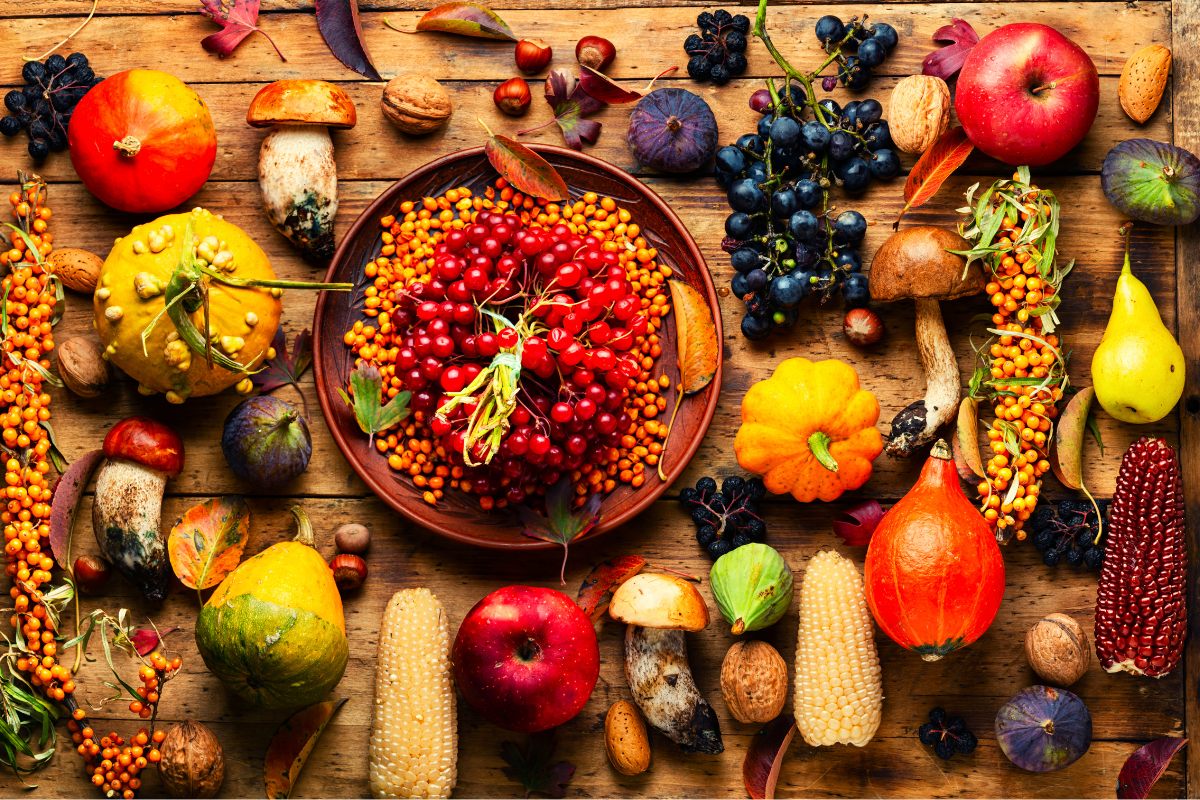A Best Nutritious Guide To A Typical Autumn Diet: Embracing Seasonal Flavors For Health And Wellness

Typical Autumn Diet: As the crisp air of autumn arrives, it brings with it a new harvest of seasonal fruits and vegetables.
Typical Autumn Diet, Autumn is the perfect time to adjust your diet, focusing on heartier, warming foods that align with both the weather and the body’s needs.
Typical Autumn Diet, A balanced autumn diet can help boost immunity, provide comfort, and prepare the body for the colder months ahead. This essay explores the key elements of a typical autumn diet, highlighting seasonal ingredients, nutritional benefits, and delicious ways to enjoy them.
Seasonal Produce For Typical Autumn Diet

Typical Autumn Diet, Autumn is a season of abundance when it comes to produce, offering a wide range of fruits and vegetables that are rich in flavor and nutrients. Some of the most common items in an autumn diet include:
Squash: Varieties such as butternut, acorn, and pumpkin are quintessential autumn staples. These squashes are packed with vitamins A and C, which support immune function and eye health. Their versatility allows them to be used in soups, roasted dishes, or even baked into healthy desserts.
Apples: One of the most iconic fruits of autumn, apples are rich in fiber and antioxidants. They can be eaten fresh, baked, or made into sauces, making them a versatile option in both sweet and savory dishes. Apples also contain pectin, which aids in digestion and supports gut health.
Root Vegetables: Carrots, sweet potatoes, beets, and parsnips are abundant during autumn. These vegetables are rich in beta-carotene and other antioxidants, which help protect cells from oxidative stress. Roasted root vegetables make a hearty and nutritious side dish, perfect for colder days.
Cranberries: Fresh cranberries, often harvested in the fall, are loaded with vitamin C and antioxidants. They are known for their role in promoting urinary tract health and can be used in sauces, salads, or baked goods.
Pears: Another autumn fruit, pears are a good source of dietary fiber, potassium, and vitamin C. They pair well with both sweet and savory dishes, offering a delicate flavor that complements fall spices like cinnamon and nutmeg.
Nutritional Focus Of An Autumn Diet
Typical Autumn Diet, As the temperatures drop, the body naturally craves more warming, nutrient-dense foods. In autumn, it’s important to prioritize foods that provide energy and support the immune system, as the transition to colder weather can challenge the body’s defenses.
Complex Carbohydrates: During autumn, the body benefits from the slow-release energy provided by complex carbohydrates. Whole grains like oats, quinoa, and barley are excellent choices. They not only provide energy but also supply essential nutrients like fiber, B vitamins, and minerals.
Healthy Fats: Incorporating healthy fats into the autumn diet helps keep the body warm and provides long-lasting energy. Foods like nuts, seeds, and avocados are great sources of monounsaturated and polyunsaturated fats, which support heart health and help absorb fat-soluble vitamins like A, D, E, and K.
Lean Proteins: Protein is essential year-round, but it becomes particularly important in autumn as the body prepares for winter. Lean proteins such as chicken, turkey, and legumes (lentils, beans, chickpeas) are ideal for maintaining muscle mass and supporting metabolic health. Vegetarian sources of protein, such as tofu and tempeh, are also excellent additions to the autumn diet.
Spices And Herbs: Fall is synonymous with warming spices like cinnamon, nutmeg, and cloves. These spices not only add flavor but also come with anti-inflammatory and antioxidant properties. Cinnamon, for example, has been shown to help regulate blood sugar levels, making it a great addition to autumn meals, particularly for those who are mindful of sugar intake.
Immune-Boosting Ingredients For The Colder Months

Typical Autumn Diet, As cold and flu season approaches, an autumn diet should include ingredients that strengthen the immune system. Foods rich in vitamins, minerals, and antioxidants are crucial during this time of year.
Citrus Fruits: While citrus fruits are often associated with winter, many varieties such as oranges, lemons, and grapefruits begin to ripen in autumn. They are high in vitamin C, which helps the immune system fight off infections.
Ginger: Known for its anti-inflammatory properties, ginger can help combat seasonal ailments like colds and sore throats. Ginger tea or adding fresh ginger to soups and stews can provide warmth and protection against illness.
Garlic And Onions: Both garlic and onions contain compounds like allicin, which have antimicrobial properties. Regular consumption of these foods can help the body resist infection during the colder months.
Dark Leafy Greens: Kale, spinach, and Swiss chard are rich in iron, calcium, and vitamins A and C. These leafy greens not only support the immune system but also provide antioxidants that protect against oxidative damage
Comfort Foods In Autumn: Finding Balance
Typical Autumn Diet, Autumn is often associated with comforting foods, such as creamy soups, stews, and baked treats. While comfort foods can provide emotional and physical warmth, it’s important to strike a balance between indulgence and nutrition.
Soups And Stews: Using seasonal vegetables like squash, carrots, and lentils in soups and stews is a great way to create filling, nutrient-dense meals. Opt for broth-based soups over cream-based ones to reduce saturated fat intake while still enjoying a hearty meal.
Baked Goods: Autumn is the season for pumpkin bread, apple pies, and spiced muffins. While these treats can be delicious, they are often high in sugar and refined flour. For a healthier version, try using whole-grain flour and reducing the sugar content by substituting natural sweeteners like honey or maple syrup.
Hot Beverages: Drinks like hot cocoa and spiced lattes are often enjoyed during autumn. To make them healthier, consider using plant-based milk and reducing added sugars. Adding cinnamon or turmeric can enhance the flavor and provide additional health benefits.
Final Thought
Typical Autumn Diet, A typical autumn diet revolves around the abundance of seasonal produce, focusing on hearty and warming foods that provide energy and nutrition. By incorporating a variety of fruits, vegetables, whole grains, and lean proteins, along with immune-boosting spices and herbs, individuals can enjoy a balanced and nourishing diet during this transitional season. Embracing the natural flavors of autumn not only satisfies cravings for comfort but also supports overall health and well-being as the colder months approach.
Also Read:
Autumn Veggies: The Nutritional Bounty of Seasonal Vegetables
The Vital Role Of Minerals In Maintaining Optimal Health
Fall Vitamins: The 5 Importance Of Taking Vitamins In Fall For Optimal Health
Healthy Dinner Ideas For Autumn: Nourishing Meals For A Cozy Season




